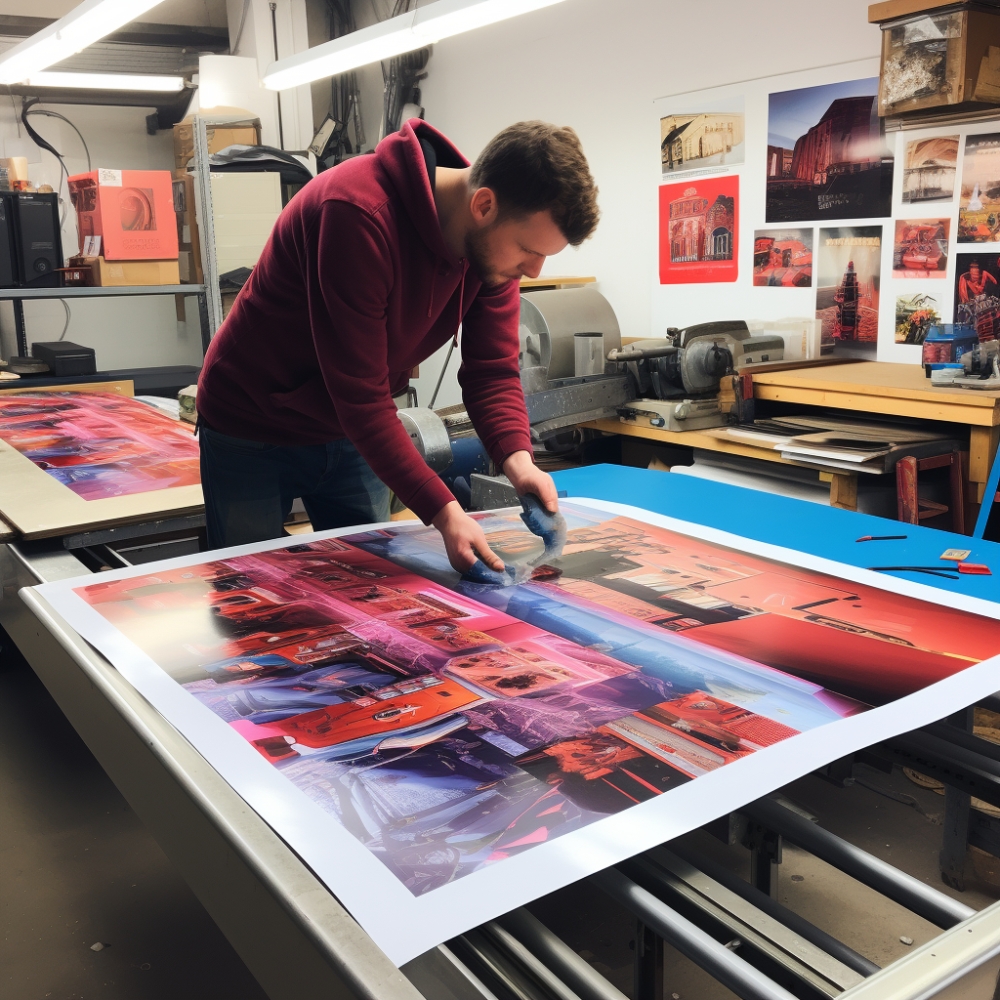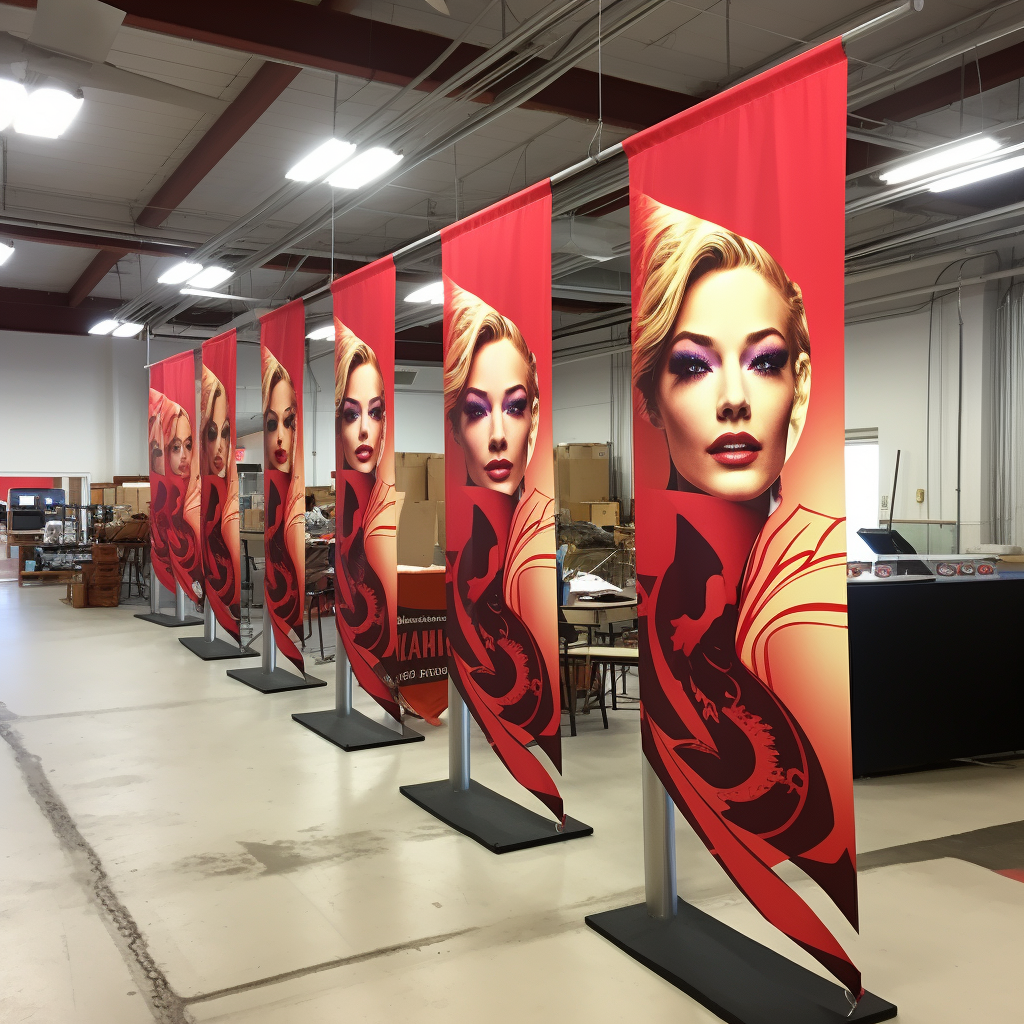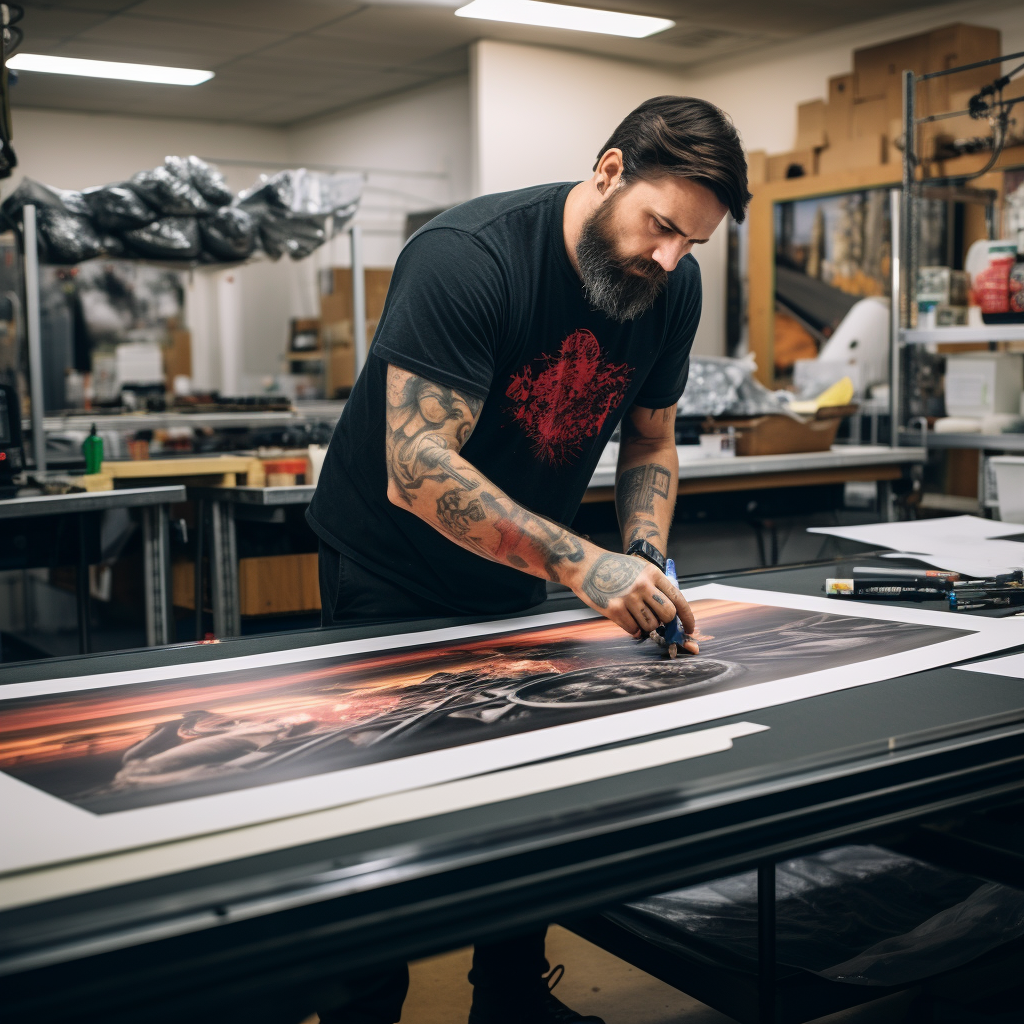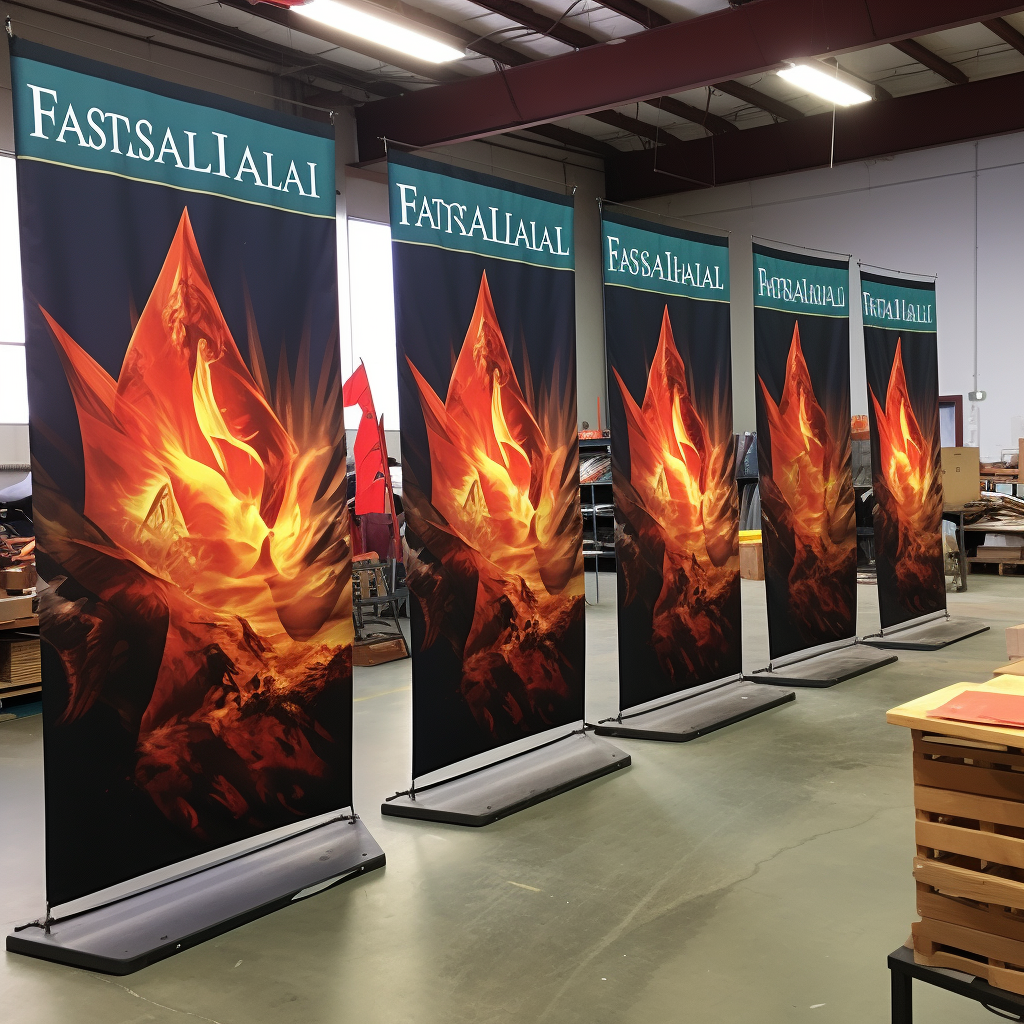
At its core, screen printing is a technique that involves pushing ink through a woven mesh stencil onto fabric. The process starts with creating a stencil, also known as a screen, which is designed to block ink in certain areas while allowing it to pass through in others. This method enables the production of vibrant, crisp images and text on a variety of materials, from t-shirts to posters and beyond.
The basic steps of screen printing include preparing the screen with a light-sensitive emulsion, exposing it to a design, and then using a squeegee to press ink through the open areas of the mesh onto the substrate. Each color in the design typically requires a separate screen, making the process somewhat complex for multi-colored designs. However, the end result is a durable and long-lasting print that resists fading and wear over time.
Given its versatility and quality output, screen printing is popular among artists, fashion designers, and marketers for creating both custom and mass-produced items. Whether you’re looking to create unique merchandise for an event or need to outfit a large team with branded apparel, screen printing offers a reliable solution.
To amplify your event marketing with custom screen printed materials, send a message to info@zodiacdisplays.com or explore our offerings at Zodiac Event Displays.
The Screen Printing Process Explained

The screen printing process is a meticulous sequence of steps that culminates in the transfer of a design onto a substrate. First, a high-tension mesh screen is selected and coated with a photosensitive emulsion. The chosen design is then printed onto a transparent acetate film, which is placed on the emulsified screen and exposed to bright light. This exposure hardens the emulsion not covered by the design, creating a stencil.
After the screen is washed, the areas of the design remain open, allowing ink to pass through. The screen is then carefully aligned on the printing press over the substrate, be it a t-shirt, tote bag, or poster paper. A dollop of ink is placed on the screen, and with a squeegee, it is evenly pressed through the mesh, imprinting the design onto the material beneath. For designs necessitating multiple colors, this process is repeated with separate screens for each hue, ensuring precise alignment to maintain the integrity of the original design.
Finally, the printed item is dried or cured, a crucial step that sets the ink and ensures the print’s longevity and resistance to washing or friction. The perfection of this time-honored technique lies in the hands of skilled technicians who balance speed with accuracy to produce consistent, high-quality results.
Materials and Tools for Screen Printing

Screen printing requires a specific set of materials and tools to achieve its distinctive results. The centerpiece of this method is the screen itself, typically made of a fine mesh that is stretched over a frame. The mesh can be composed of various materials, including polyester or stainless steel, with the choice depending on the intricacy of the design and the type of ink used.
The photosensitive emulsion used to coat the mesh is another crucial material. It reacts to light, allowing for the creation of the stencil needed for ink application. The ink in screen printing is thicker than that used in other printing methods, which enables it to better adhere to a wide array of substrates and offers vibrant, long-lasting colors.
Essential tools include the squeegee, a rubber-bladed tool used to evenly spread ink through the mesh screen; acetate films for transferring the design onto the screen; and a light source for exposing the screen with the design. Additionally, a press is commonly used to hold the substrate in place and ensure consistent ink application, and a curing unit is employed to set the ink after printing.
For those who screen print regularly, an exposure unit for screen preparation and a flash cure unit for speeding up the drying process between multi-color applications can further refine the process. Each tool and material plays a pivotal role in the screen printing process, which can be as much an art form as it is a technical procedure.
Applications of Screen Printing in Various Industries

Screen printing serves as a versatile printing technique widely applied across numerous industries, each leveraging its adaptability and durability. Within the fashion industry, screen printing is a staple for creating vibrant designs on garments, ranging from t-shirts to exclusive designer fabrics. The ability to produce long-lasting, colorfast prints makes it a preferred method for apparel decoration.
In the realm of advertising and branding, businesses utilize screen printing to produce promotional items such as posters, banners, and retail displays. The high-quality finish and resistance to fading are particularly advantageous for outdoor signage and flags that are exposed to the elements.
The electronics industry also employs screen printing, albeit in a more specialized form. It is used to apply conductive inks onto circuit boards and components, illustrating the method’s precision and consistency, which are critical in this high-tech field.
Furthermore, screen printing has made its mark in the manufacturing of product labels and decals, including those for appliances and machinery, where durability under various conditions is essential. The technique’s ability to adhere to different materials, such as plastics and metals, is highly valued.
In the art world, screen printing, often referred to as serigraphy, is embraced by artists for creating multi-layered prints with rich textures and depth. It has been a popular medium for art reproductions and original works due to its unique aesthetic properties.
Each of these applications demonstrates the broad appeal of screen printing and its capacity to meet diverse requirements, from precision and permanence to artistic expression.
Advantages of Screen Printing Over Other Methods
Screen printing boasts several distinct advantages over alternative printing methods that contribute to its enduring popularity. One of the primary benefits is its exceptional versatility; it can be applied to a vast array of substrates, including textiles, ceramics, wood, glass, and metal. This adaptability makes it an invaluable technique for a multitude of projects.
Another key advantage is the durability of screen-printed items. The inks used in screen printing are renowned for their long-lasting qualities, especially when exposed to outdoor conditions. This results in prints that are resistant to weathering and UV damage, ideal for items that require longevity, such as outdoor signage and apparel.
Screen printing also offers superior coverage, enabling the creation of vibrant, opaque images that stand out. This is particularly important for designs that demand bold, saturated colors that other printing techniques may not replicate as effectively.
The process is also celebrated for its cost-effectiveness in high-volume orders. Once the initial setup is complete, the cost per unit decreases significantly, making it an economical choice for large runs. This scalability is a crucial consideration for businesses and organizations looking to produce promotional materials in bulk.
Additionally, screen printing allows for a high level of customization and artistic freedom. Printers can manipulate various aspects of the process, including the thickness of the ink and the mesh count of the screen, to achieve unique textures and finishes that are challenging to replicate with digital or offset printing.
Lastly, the quality and tactile nature of screen-printed images are often preferred by consumers and collectors, adding a premium feel to the end product that justifies the choice of screen printing over other methods for many applications.
Maintaining Quality in Screen Printing Production

To ensure the highest standards are upheld in screen printing production, meticulous attention must be devoted to each phase of the process. Quality control begins with the design, requiring high-resolution images and proper separation of colors. Precise screen tension and correct emulsion application are critical to avoid issues such as bleeding or uneven ink distribution.
The choice of ink also plays a pivotal role in quality maintenance. Using premium inks that are suited to the substrate ensures consistency and longevity of the print. Additionally, the squeegee – a tool used to spread ink over the screen – must be in good condition and employed with appropriate pressure and angles to achieve a clean and sharp imprint.
Curing, or the drying of the ink, is another vital step. Improper curing can lead to cracking or fading; therefore, it’s important to adhere to the specified time and temperature settings for each type of ink and material. Furthermore, regular maintenance of the screen printing equipment, including cleaning screens and calibrating machinery, ensures consistent quality and reduces downtime.
Lastly, a thorough final inspection of the products is essential. Each item should be examined for any defects or inconsistencies before it is deemed ready for the client. Attention to detail at this stage ensures that only the finest quality products leave the production floor.
Send a message to info@zodiacdisplays.com to amplify your event marketing.









